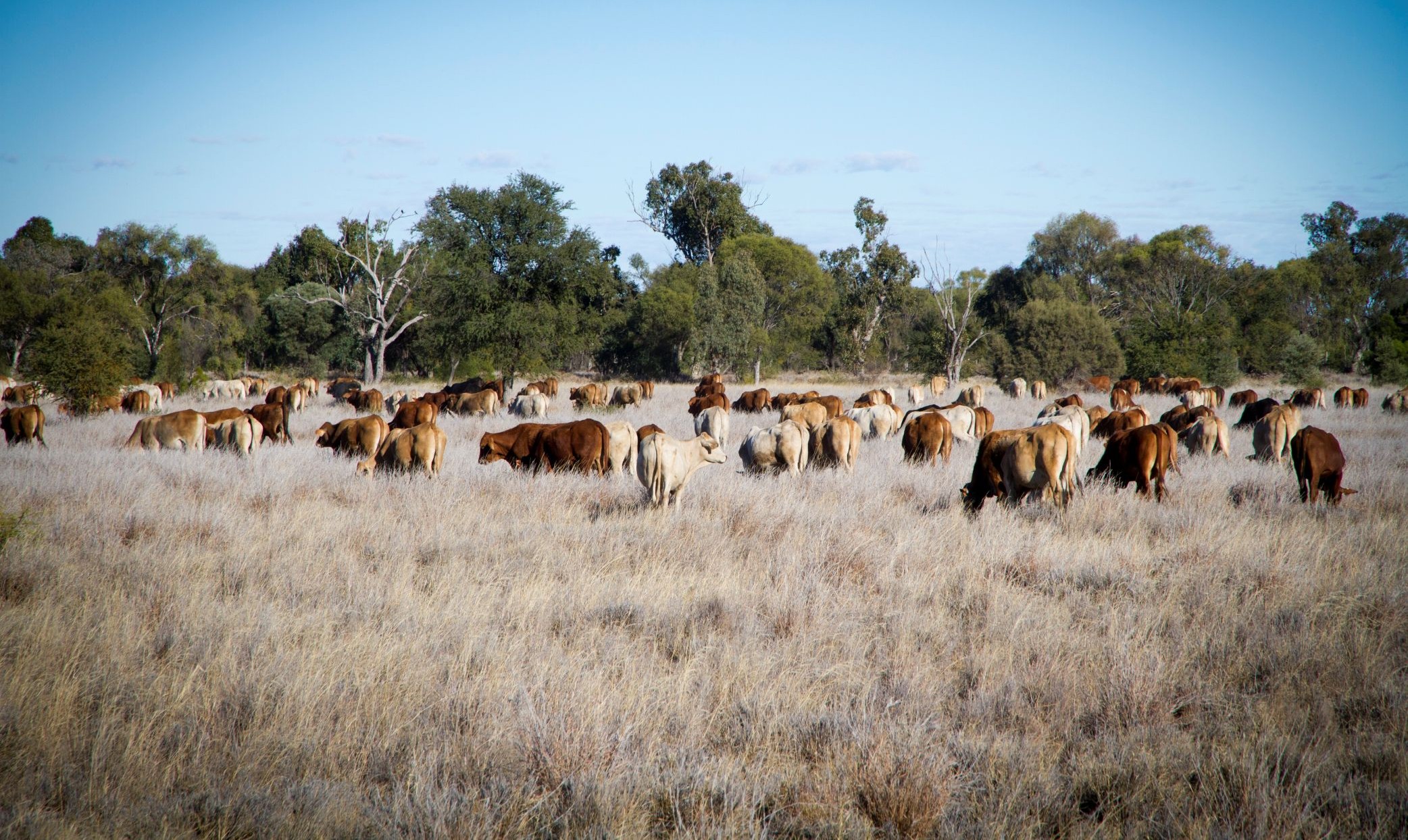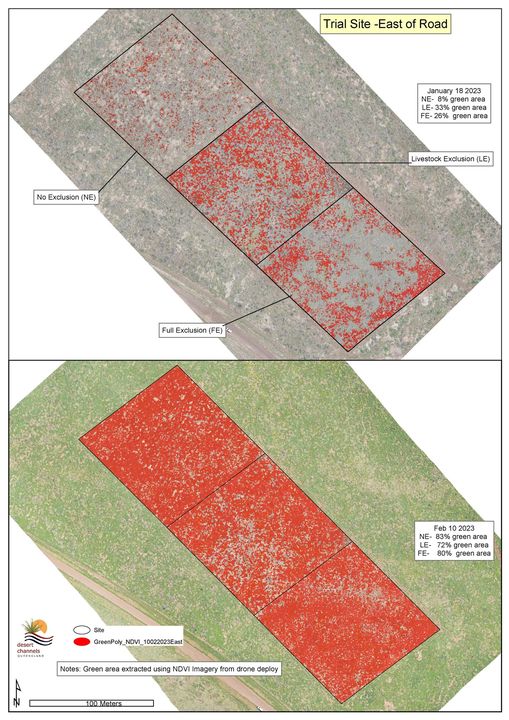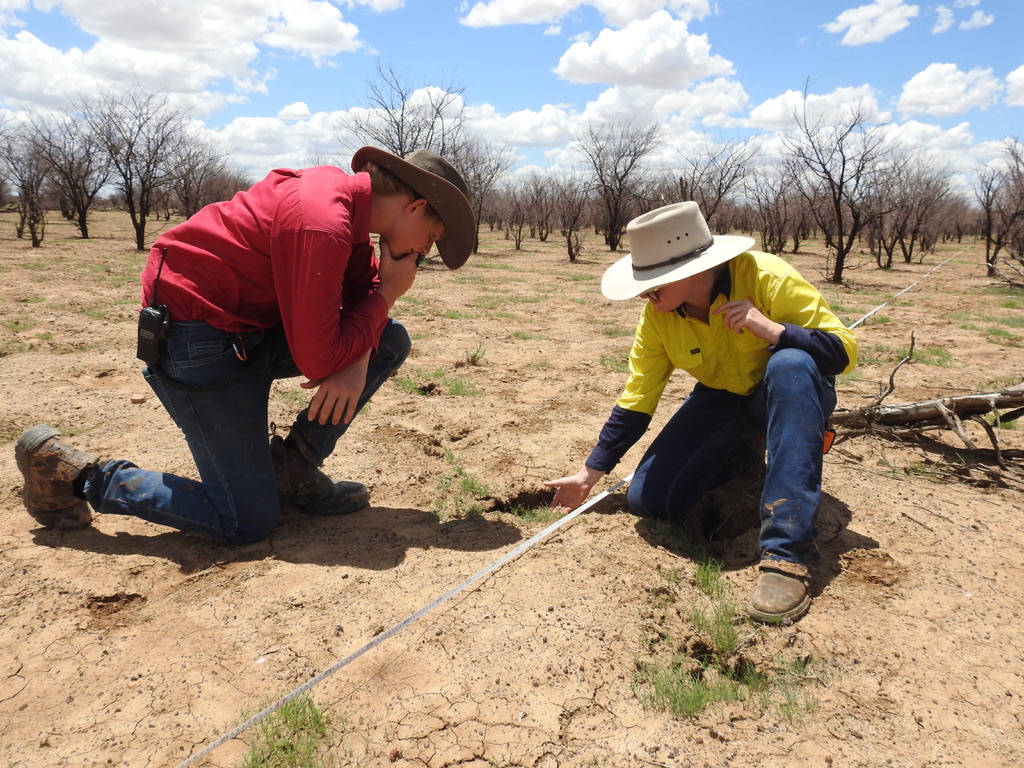What is the grazing impact of cattle vs kangaroos?

A long-term ecological trial.
Recently, Desert Channels Queensland has been trying to tackle a question that has long-vexed landholders in our region: what exactly is the grazing impact of cattle versus kangaroos?
To do this, we set up a long-term trial that used drone mapping to assess grass-cover recovery under three different conditions:
- Exclusion of domestic stock
- Exclusion of all animals, including kangaroos,
- and no exclusion.
Different hectare areas were fenced off to simulate these areas.
We then used a technique called “orthomosiacs” to take hundreds of overlapping images of a section of property and stitch together into one image – kind of like what your grandma used to do when making a quilt.
Once you have this image, you can then “look” at it in many different ways and many different spectrums to highlight objects of interest.

In this way, we can use stitched-together images to extract valuable information about a location, such as how many prickly trees are in a paddock, or in this case, the extent of green grass in a given area.
Then, if you compare the orthomosiacs over time, we get trends.
The results
After establishing a trial site in 2018 and monitoring the site each month, we decided to take some new images to understand the grazing impacts of kangaroos versus cattle.
These images, which you can see above, are from January and February in 2023 – roughly the time we received some good rainfall.
So, what do the images show?
- In the “no exclusion” zone, the images show lower grass cover where stock have been heavily grazing over four years. During this period, rain was scattered and light.
- The “full exclusion” area, where no animals were allowed to graze, also suffered from some pasture decline.
- But importantly, it showed an early and fast grass recovery response in “stock excluded” paddocks, that still had kangaroos.
If this is where the story ended, conclusions would be obvious – the combined grazing of cattle and kangaroos is heavily impacting grasscover in the property area, while kangaroos can actually provide some benefit when allowed to roam in areas without stock.
But more importantly, a month later and following good rain, the story is very different.
Take another look and notice how, after very strong rainfall, all areas are performing the same regardless of the fencing zone.
If you only looked at this second image, you would assume that cattle and kangaroos have no impact on grass recovery whatsoever. But comparing to the first image, we know this is only true in good seasons where pasture growth rates exceed grazing rates at the time.
Stitching it together
The real lesson here is the incredible growth capacity of our native perennial pastures and their ability to respond and recover.
But the data to date also confirms a well-known but interesting trend: that our native pastures benefit from disturbance such as grazing and fire.
If left too long without grazing, pastures in the Desert Channels region will start to naturally decline, while grazed pastures can respond amazingly quickly – as long as they have not been overgrazed.
Kangaroos might even help spelled pastures recover faster, if managed well.

